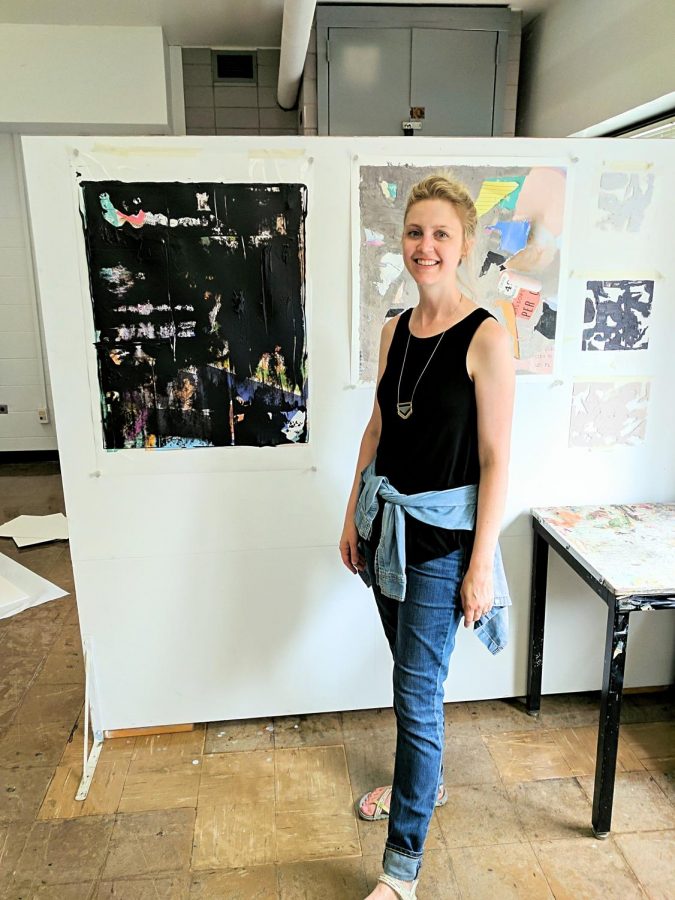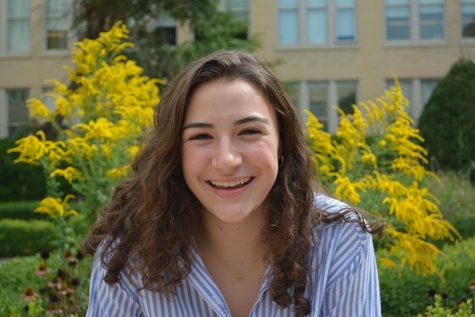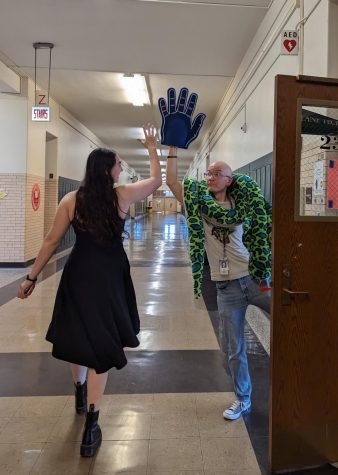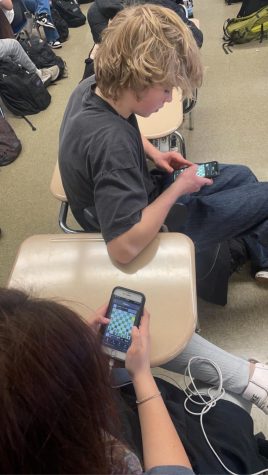Summer break? Yeah right.
Ms. Wain posing with her artwork at a micro-residency at the University of Illinois at Urbana-Champaign, which she and the other art teacher refer to as “Art Camp”. (Photo courtesy of Ms. Wain)
June 4, 2019
Discarded worksheets and assignments, notebooks and folders, garbage cans full of trash collections a year in the making and an eerie silence fill the halls of Lane. After school has ended for the year, students spend time at the beach, exploring downtown and traveling. But what does summer mean for teachers?
For Mr. Tarbhai, AP United States History and History of Chicago teacher, his summer plans consist of starting a clerkship under Judge Matthew Kennelly at Chicago’s Federal District Courthouse.
Tarbhai is finishing up his first year of law school at DePaul University and said that it’s beneficial to do something law related over the summer to supplement what he is learning in the classroom.
Tarbhai’s work this summer will consist of lots of legal research to find the appropriate precedent or governing law for a particular case. He will then write legal memos to objectively determine which direction the judge should rule.
“I’ll be trying to convince the judge one way or another, not necessarily based on my opinion, but based on precedent,” Tarbhai said.
Although law school might seem unrelated to U.S. History, Tarbhai said that he is able to bring what he learns in his law classes back to Lane.
“As a teacher, it’s going to keep me reading, writing, doing research,” Tarbhai said. “I’m teaching civics next year, and that entails a lot of constitutional law, so I’ll probably be doing research on stuff that’s very relevant for the stuff I’ll be teaching next year.”
As for Ms. McMahon, an AP Government and AP Psychology teacher, her summer will consist of more teaching.
McMahon spends her summers teaching at Northwestern’s Center for Talent Development (CTD) which she calls “camp for gifted students.”
This summer will be her fourth year at the CTD where she will be teaching AP Psychology and a Supreme Court class.
The classes she teaches at Northwestern are more laid back, McMahon said. Since she is with her students all day as opposed to 50 minutes, she gets to know them better.
“There’s the expectation that they’re learning, but also it’s a camp, so you want them to have a good time,” McMahon said. “There’s less pressure on results.”
McMahon said one of the benefits of continuing to teach over the summer is finding engaging activities she can implement in her classes in the following school year.
“I can fine-tune what I want to teach and kind of try things on them like ‘Oh, that worked really well, I’ll do that again,’” McMahon said.
However, there can also be some drawbacks to working all summer.
“I kind of don’t have a summer because really I go straight to teaching that class and come back in the fall,” McMahon said.
However, she also noted that the extra money is a plus.
“Having the extra money helps,” McMahon said. “I think there’s a lot of value in not working but there’s value too, financially.”
Ms. Wain, Honors Painting and AP Art History teacher, is spending a week of her summer at a micro-residency at the University of Illinois at Urbana-Champaign, or as she and other art teachers call it, “Art Camp.”
Typically art residencies are live-in programs for artists, writers and academics to focus on their work.
The residency at UIUC is a week-long program to allow art teachers to cultivate their artistic practice, Wain said.
“I’m going to be focusing less on my students and more on what I’ve got going on painting wise,” Wain said. “Trying to maybe experiment with some new ideas, but maybe also try to keep building on what I already do.”
Wain has participated in the program once before, and this year she is being joined by Ms. Diamond, Ms. Faletto and Ms. Chisholm.
According to Wain, the school year can get busy, which means that she has less time to make her own art. The program allows art teachers to regenerate themselves.
“It is a form of professional development,” Wain said. “It’s just not developing our teaching pedagogy; It’s more focusing on our skills as an art teacher and as an artist.”







